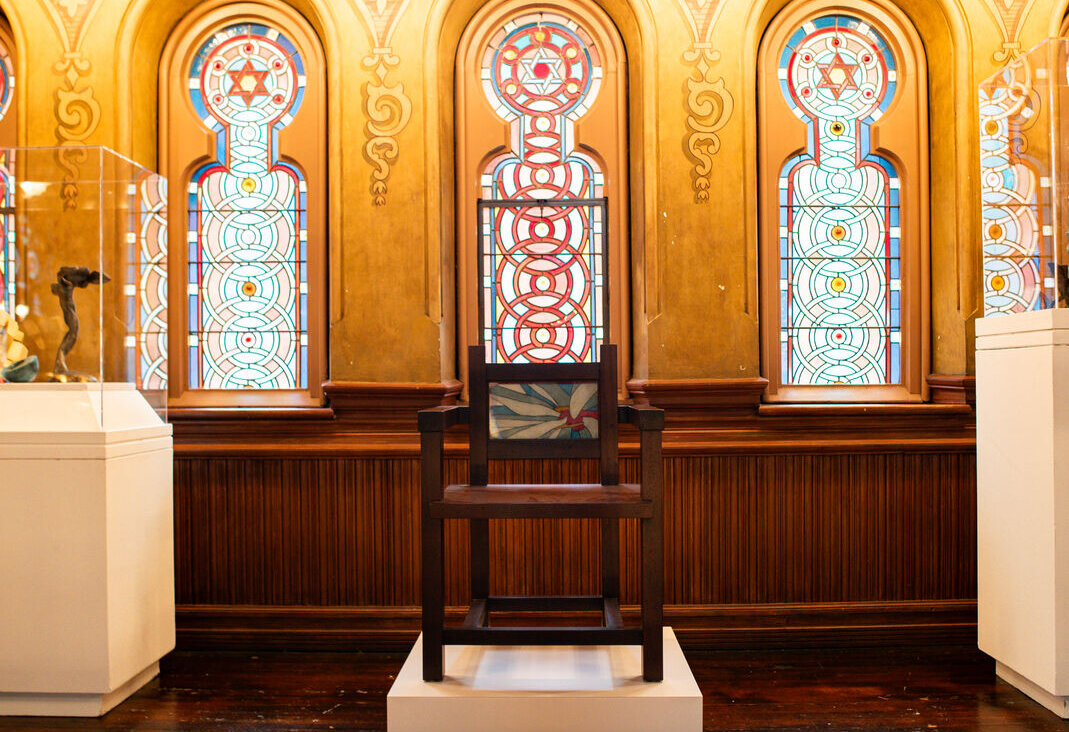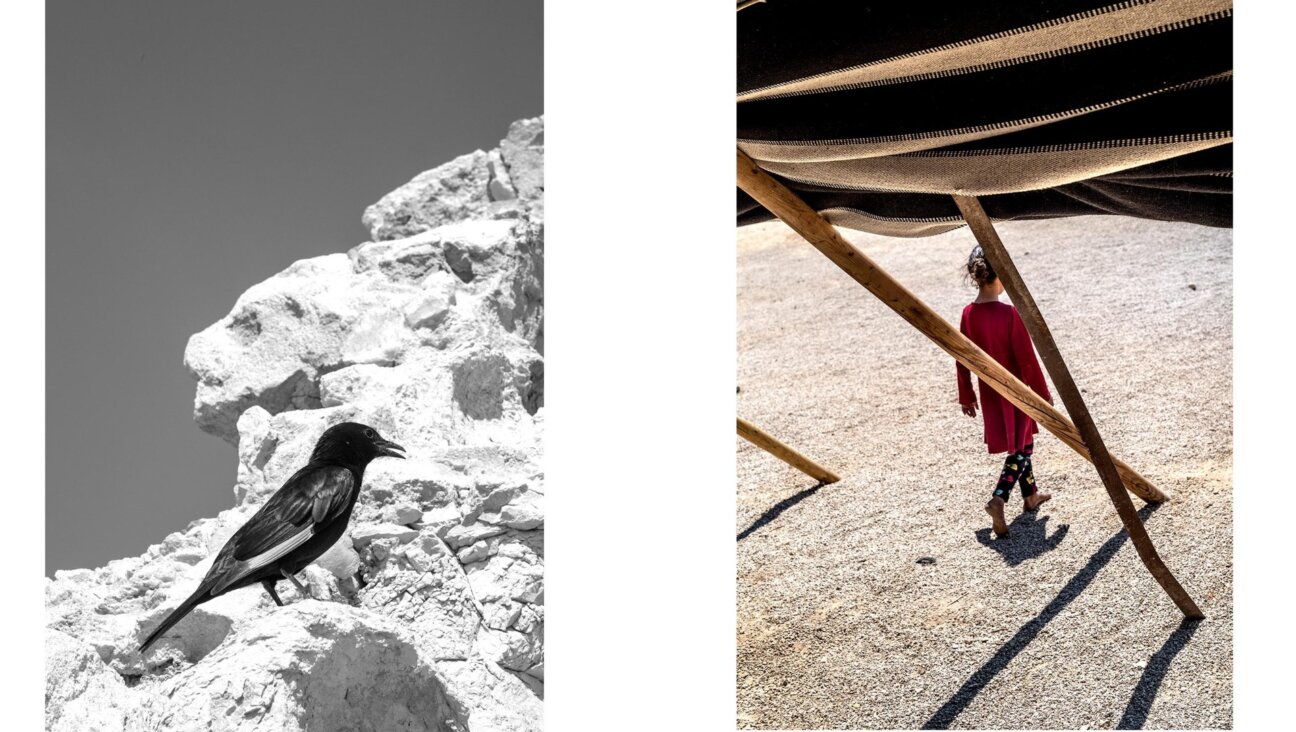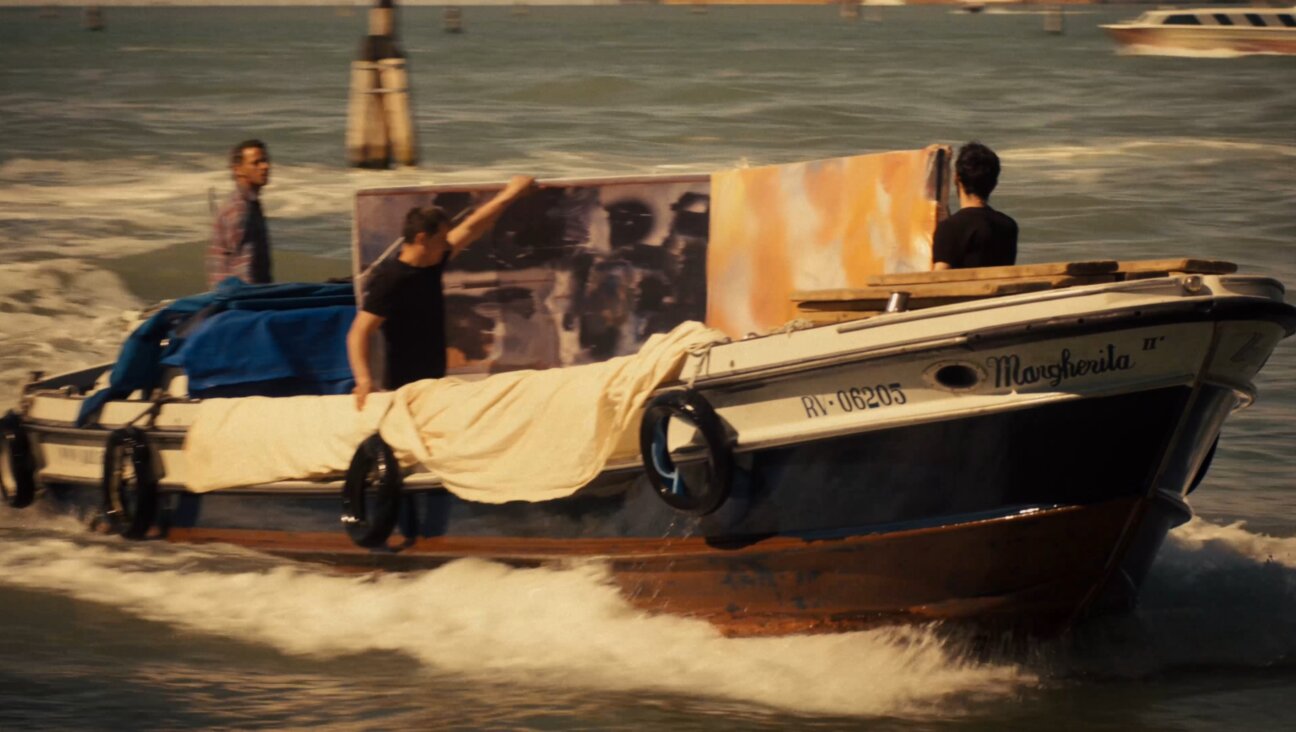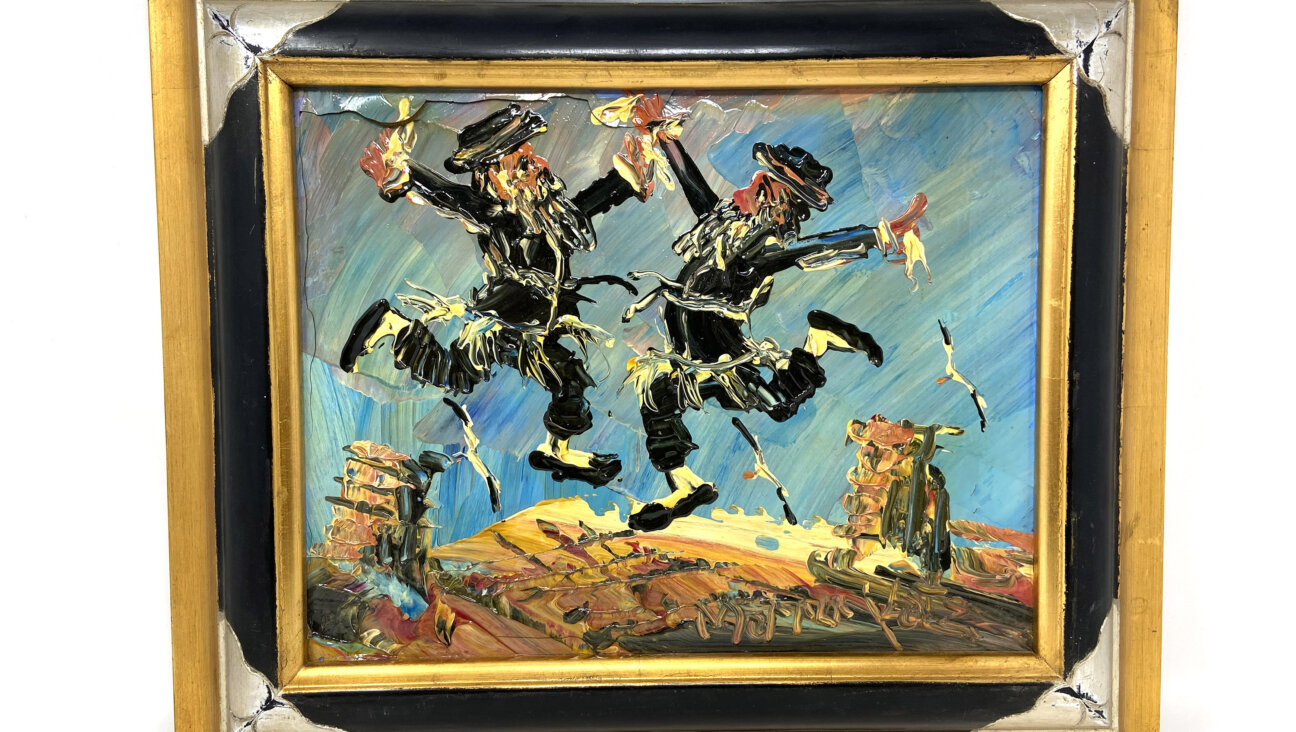Why the Status of Judaica Is Waning

In the Line of Fire: A young man making a menorah at the Bezalel School of Arts and Crafts in Jerusalem, circa 1950. Image by Getty Images
Last month’s column, as you may recall, made much of Judaica collectors who prefer to sell rather than donate their holdings. No sooner had I made that claim than a number of readers as well as colleagues duly informed me that I was barking up the wrong tree. Dolefully, they pointed out that even if a Judaica collector were inclined to offer his or her assemblage of Kiddush cups and spice boxes to a public institution, there’d be few takers. These days, Jewish museums, I was told time and again, don’t know what to do with the shelves upon shelves of Judaica they already have in hand (and in storage) and are not about to add to them anytime soon.
These comments suggest that Judaica is now passé. While Kiddush cups, spice boxes and Seder plates circulate briskly as objects of ritual use, they seem to have had their day in the sun as objects of aesthetic value and contemplation. No longer does the repoussé surface of a silver goblet or the colorful illuminations of a ketubah please the eye, tickle the imagination, and give rise to wonderment at the artist’s hand. Gone, too, are the days when the Jews, urgently in need of proof that they, too, were a visual people and on a par with other world cultures, would proudly point to their array of Jewish ritual objects as a case in point. Contemporary Jews seek and find visual pleasure elsewhere. As for the collective pursuit of external affirmation, well, that’s an entirely different ball game in 21st-century America.
Modernization, acculturation, Americanization — the usual suspects — can be effectively deployed to explain the waning of Judaica’s status within the museum world. I suppose you could also add to our list technology, changing forms of communal engagement and, while you’re at it, there’s always that old saw, “Oh, kids today.”
I’d like to introduce another factor into the mix: history — or, more to the point, the internal history of how Judaica first came to be rendered a modern exercise in aesthetics rather than a traditional form of ritual expression. That didn’t just happen; there’s a backstory. The result of a specific set of circumstances, the re-evaluation of Judaica was a late 19th-century phenomenon bound up, through and through, with the steadily growing centrality of the museum to the public square.
Once the isolated preserve of the mighty, museums increasingly became democratic and public spaces, Western society’s meeting ground, or better yet, its common ground. As museums loomed larger and larger as civic institutions, display became a medium of information, cultural uplift and citizenship. To be on display, let alone to visit one, was to be a member in good standing of the body politic. Still, there were limits to the notion of what constituted an acceptable display. Not any old exhibition would do. Pride of place was given to art.
Like their fellow citizens, Europe’s Jews were eager to put themselves on view, to herald their ancient and enduring cultural patrimony, and to demonstrate their contributions to Western civilization. But blessed more by Clio, the muse of history, than by her sister muses, they didn’t have all that much to show for it. Illuminated manuscripts were lovely, to be sure, but they simply didn’t hold a candle to the teeming canvases of Bruegel or Fra Angelico.
Gone are the days when Jews needed to prove they were a visual people.
How, then, to hold their own within the galleries of the modern museum? To make the case that they, too, had art? By showcasing Judaica as a triumph of craftsmanship and artistry. The chased silver chalice or the intricately worked Hanukkah lamp became modern Jewry’s artistic calling card, its bid for acceptance, or, as one of their number put it, its strategy for securing “arts citizenship rights in the arts of all nations.”
That ringing statement came from the pen of Boris Schatz, the founder of the Bezalel School of Arts and Crafts in Jerusalem, whose students took the idea of “arts citizenship rights” to new heights by claiming Judaica as a form of Jewish national expression in the years before the establishment of the State of Israel.
I’m told by those in the know that Jewish ritual objects bearing the imprint of Bezalel’s atelier are very much in demand these days — by collectors. Let’s see if the rest of us can follow suit by re-engaging with Judaica, if not on its own terms than as pieces of our past.
















